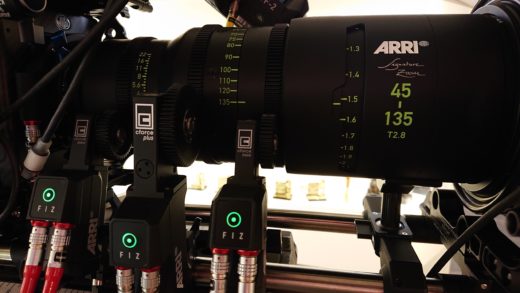
No, this isn’t a call for the thousand-dollar, twenty-to-one zoom that’s f/1.4 all the way down, covers full frame and the size of a soda can. In this series, we’re supposed to be talking about things we want that could be built but haven’t been. That hypothetical piece of optical wizardry is definitely something we want, but, pending the development of some sort of sci-fi technology involving photons refracted through an alternate dimension, it isn’t something that can be built.
What we are asking for is a combination of two different types of lens that certainly exist independently, and could, with a bit of lateral thinking, probably be combined.
The first type of lens is something that’s so common in modern photography that it’s easy to overlook how clever stills lenses are. Or at least, it was easy to overlook until the portentous day Canon showed that spectacular shot of motorcycle rocketing toward camera on a many-hundred-millimetre lens, which stayed razor sharp all the way in. We’ll say right now that autofocus likely won’t ever be suitable for everything, but even the most gimlet-eyed camera assistant has probably appraised at least one upcoming shot, grimaced internally, and wished for that technology.
The second type of lens is the traditional, PL-mounted cinema glass which has only recently developed the ability to sometimes, maybe, report its focus and iris ring positions electronically in a manner that has a small chance of later appearing in the user interface of a visual effects workstation.
Amazing autofocus tricks
The former can achieve the amazing autofocus tricks. The latter, while robust, beautifully made, and established by decades of tradition, cannot. Unifying those things is at least an interesting idea. Who doesn’t want a classic, original-series Cooke Speed Panchro rehoused in a shell that’s just as nice as any high-end rehousing, but also capable of integrating it with an AF system something like Canon’s?
The politics of doing that, considering Canon is a lens manufacturer which has traditionally been unwilling to share details of its electronic protocols, is less certain. Still, in principle some sort of comparable AF system for the high end could be developed. The problem is the technical practicality of that, because it would demand a vast effort in both the development and implementation of standards, changes in the fundamentals of the sensors used in cinema cameras, and some very clever engineering.
The engineering issue is that the entire approach to focus is different between cinema and stills. On a movie set, we generally operate by estimating the distance to the subject and setting it on the lens. Electronic stills lenses simply know which way they have to move to get the subject to be sharper. Generally, the system has no idea what the distance is. It just sees sharp or not. That doesn’t mean that a traditional lens couldn’t be operated in the same way, though it does mean that we can’t simply build a stills-style lens and then strap an electronically-encoded focus ring onto it.
That’s more or less what Sony’s E-mount zooms do. They combine a lot of zoom range and a reasonable minimum aperture into a compact chassis at a good price, and they’re a solid option for someone who doesn’t want to pay for one of the big Fujinon or Canon PL-mount zooms. Still, the behaviour of the control rings can occasionally feel a little laggy as the servos race to keep up. A high-end cinema lens must not have that behaviour.
A solvable problem, but a tough one
That’s possibly a solvable problem given enough engineering. The bigger issue is that Canon-style autofocus relies on sensor features which are built into the sensor at a very low level. Pixels capable of phase focus detection have a fundamentally different structure to normal pixels. It’s clearly possible to create a high end cinema camera with these features because Canon’s high end cinema cameras do exactly that. It was possible because Canon makes cameras and lenses and sensors, which highlights the problem.
Persuading other lens and camera companies to do the same would face a significant chicken-and-egg problem. Lens manufacturers, rehousing specialists and camera manufacturers – and the sensor manufacturers which supply them – would all need to do a large amount of work simultaneously in order that Canon-style autofocus could become available. Doing this would expose lens people who are used to opto-mechanical design into a world of motors, circuitry, and other less familiar things, and the complexity in the sensor hardly bears thinking about.
Still, is it desirable? Focus pullers are wont to form a pitchfork-wielding mob whenever autofocus is mentioned, but yes, frankly, it’s desirable. Is it possible? Probably. Is it likely? Well, put down your pitchforks, first assistants. Given how many times the industry as a whole tried to implement even basic lens metadata recording, it’s difficult to summon much confidence that this is going to happen.
